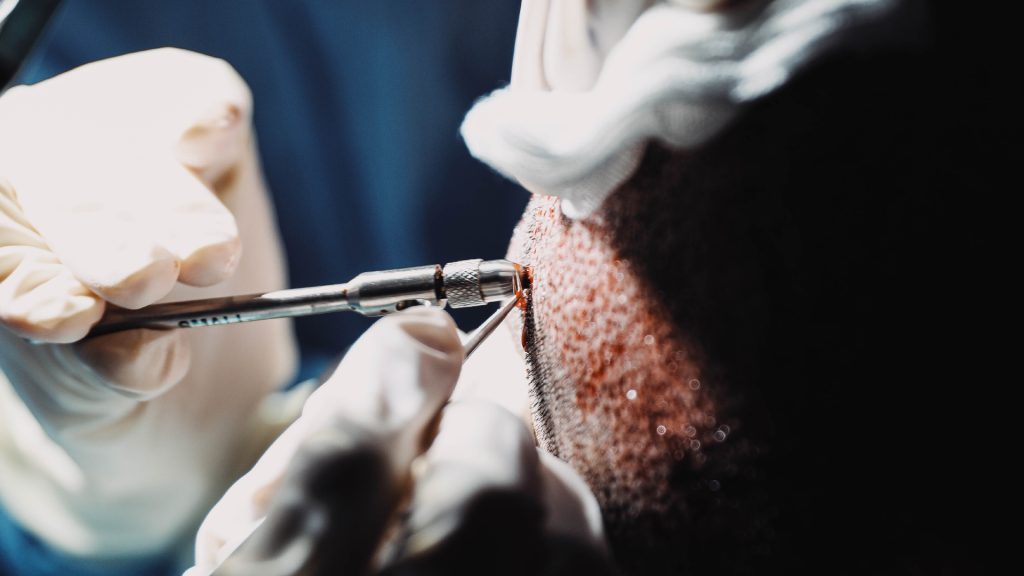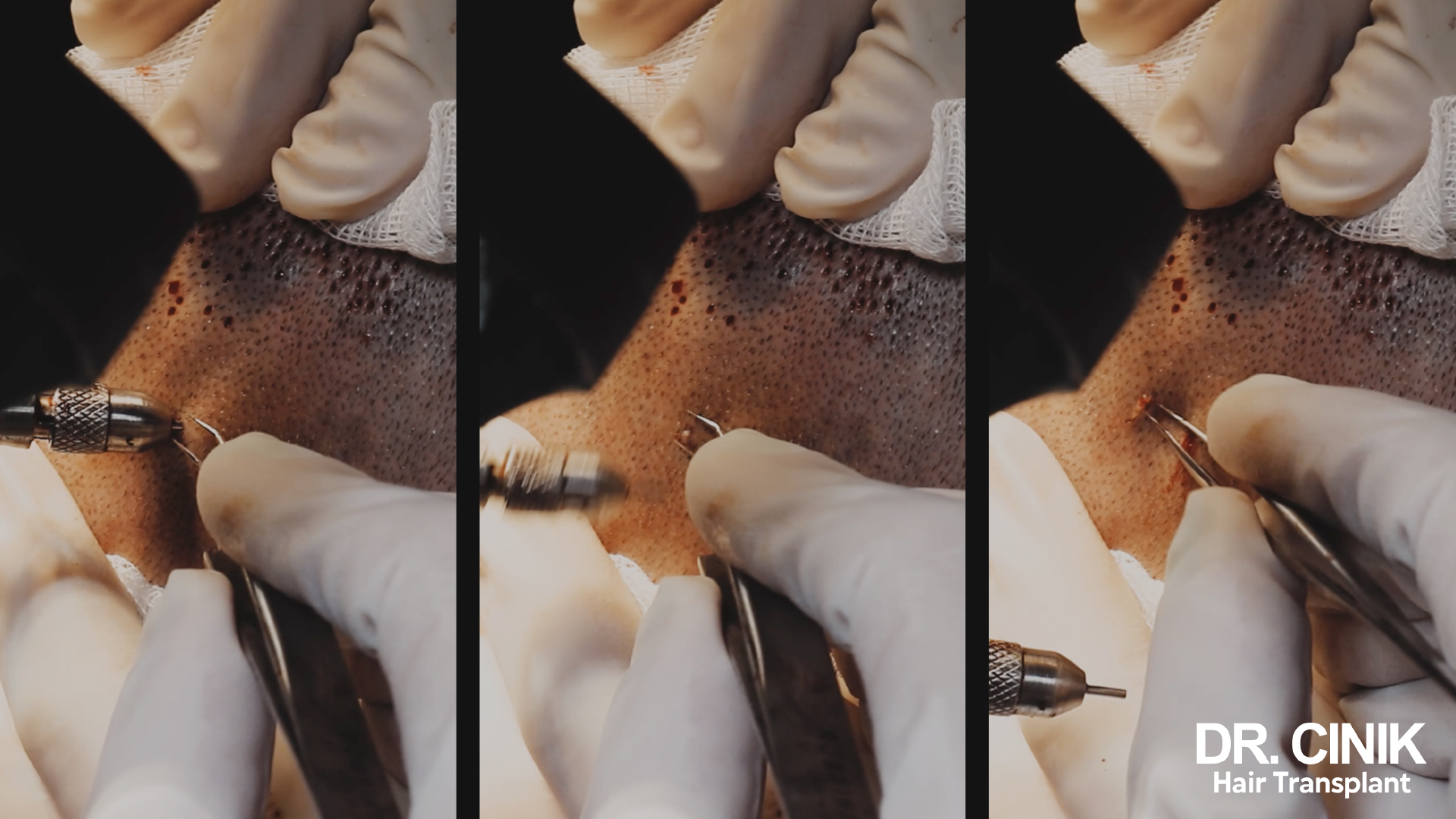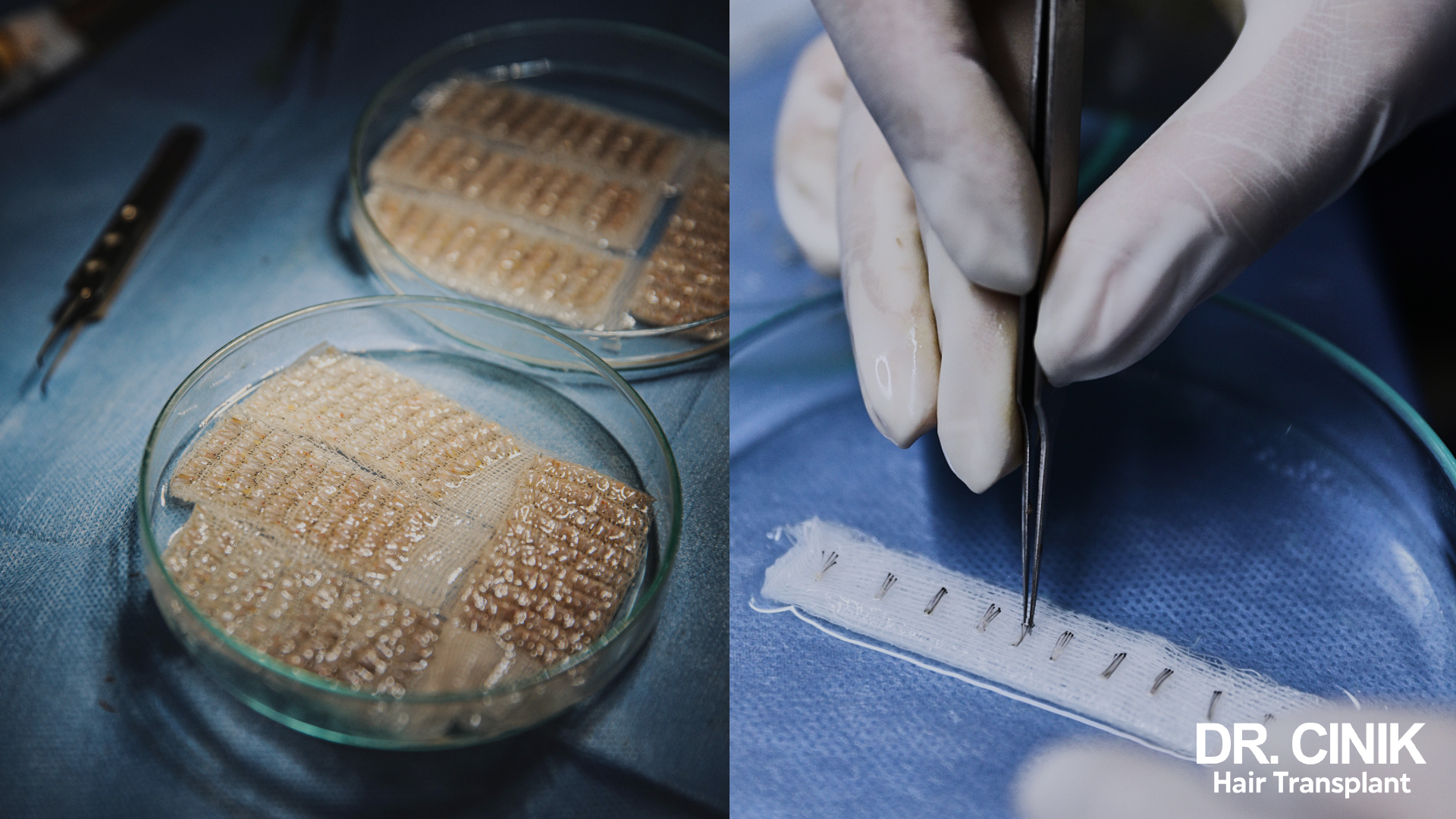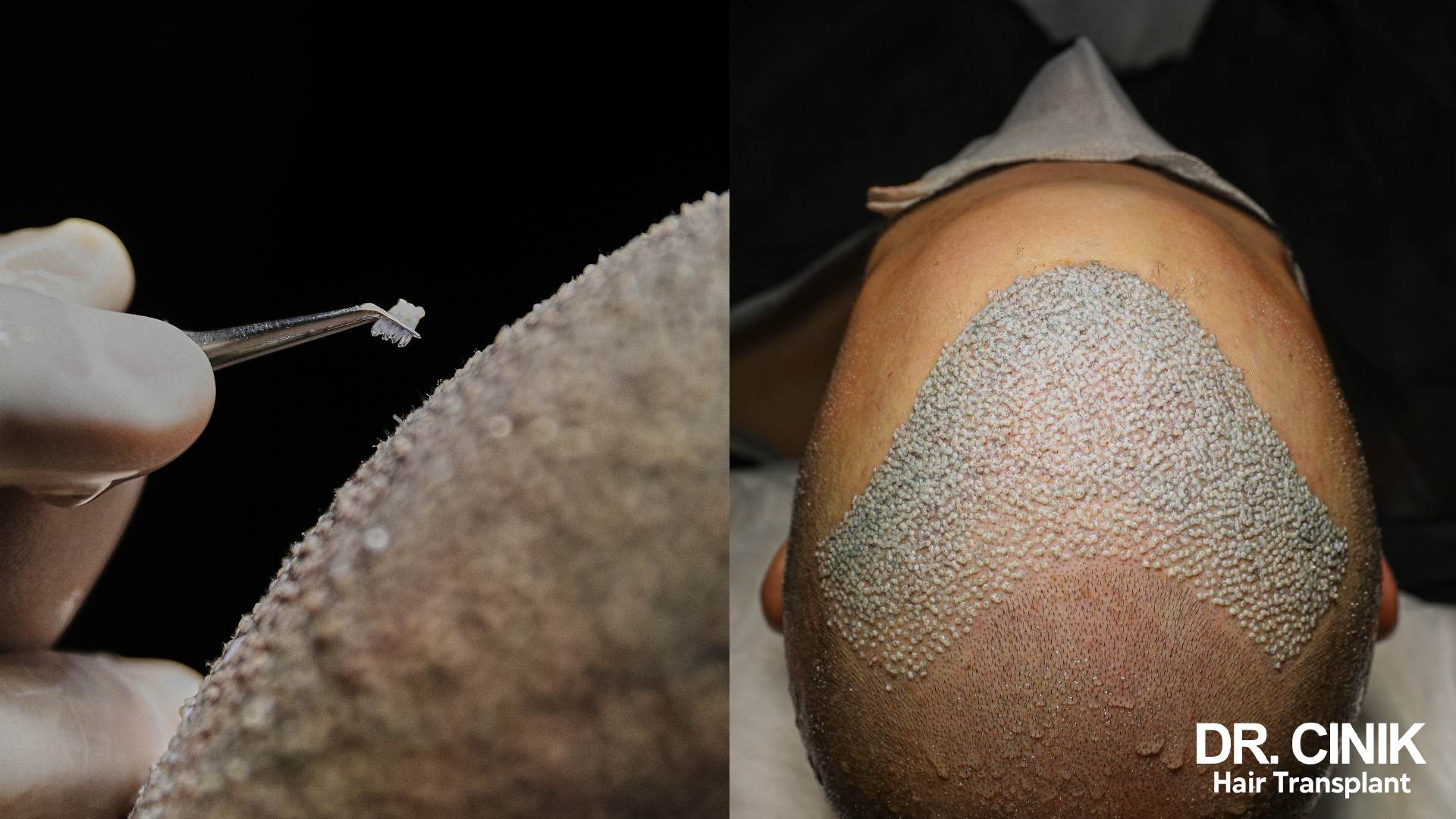Manual FUE Hair Transplant: Expert Implantation for Unparalleled Naturalness

Sommaire
FUE (Follicular Unit Extraction) hair transplantation involves harvesting follicular micro-grafts one by one from the back of the scalp before meticulously reintroducing them into thinning areas.
When it comes to implanting the grafts, there are two approaches: robotic implantation and manual implantation. While robotic implantation brings appreciable time-savings, it produces more standardised, less natural results and negatively impacts graft survival rates. Manual implantation is more time-consuming, costlier, and requires an experienced surgeon, but it faithfully replicates the patient’s natural distribution for ultra-natural outcomes. Only the most seasoned practitioner can craft a naturally lush result by manually embedding each micro-graft while respecting the unique angle and pattern of original hair growth. This specialised technique, mastered by so few experts, makes all the difference between ordinary and outstanding hair transplantation outcomes.
What is manual FUE hair transplantation?
Follicular Unit Extraction (FUE) hair transplantation is a two-step technique:
Graft harvesting
This consists of extracting, one by one, the grafts containing one or more hair follicles from the back of the scalp. The grafts are harvested using a manual punch, with the surgeon performing slight rotations to delicately detach each graft before extracting them with tweezers. This is a precision technique requiring concentration and dexterity.

Graft implantation
Once harvested, the grafts are placed in a nutrient solution while awaiting implantation. The practitioner then starts by manually opening the insertion channel for each graft using a miniature sapphire or steel blade. Using the DHI technique, it is also possible to use a CHOI implanter pen. Then, using tweezers equipped with optical magnification, the surgeon inserts each follicular unit with precise control over depth, direction and density to optimise graft survival and reproduce the original angle and distribution as faithfully as possible.
The Advantages of Manual FUE Hair Transplantation
Strikingly Natural Results
Thanks to meticulous one-by-one implantation, the expert practitioner carefully replicates the patient’s native hair angle and distribution. Using specialised tweezers with optical magnification, they can rebuild the unique growth pattern with unparalleled accuracy for custom, ultra-natural outcomes.
Excellent Graft Viability Rate
Due to its surgical precision, the gentle manual approach greatly increases transplant survival. Viability rates exceed 95%, compared to just 80% with automated techniques. This exceptional uptake paves the way for optimal regrowth.

Convincing Hair Density
Owing to the extreme dexterity of the seasoned surgeon, the grafts can be embedded very densely while still preserving their integrity. It allows for a hair density of up to 40 replanted follicles per cm2, far exceeding the 30 follicles/cm2 maximum seen in robotic FUE procedures.
The Limitations to Consider
While promising, manual FUE still has some limitations to consider:
Longer Operative Time
Meticulousness being required at all steps, the hair transplantation procedure lasts 4-8 hours rather than the 2-5 hours of a robotic transplant.

Increased Cost
Dr Cinik offers an all-inclusive manual FUE package for €3,790. This covers:
Le forfait comprend :
- Manual extraction over 2 days if needed
- Manual DHI implantation
- Lodging and VIP transfers
- Consultations and follow-ups with Dr. Cinik
- PRP treatment and supplemental analyses
- Translator and post-op care
See all our hair transplant prices
An Investment That Pays Dividends
Despite its higher initial cost, this bespoke procedure with white-glove support ensures unmatched outcomes. Ultimately, this premium expertise warrants the price for those seeking exceptional, lasting hair transplants in Turkey.
See our article comparing all FUE-derivated techniques

How does a robotic hair transplant work?
Two main hair robots exist: the Neograft SAFER and the ARTAS Restoration Robotics. Let’s take an in-depth look at their technology and the different stages of a robotic graft:
The Neograft SAFER system
Neograft was the first assistance robot to be released in 2009. Its SAFER system includes :
- A rotary air-powered micro-punch
- A suction system to remove the graft
- A Control Software
During the grafting procedure, the surgeon will adjust the speed of the micromotor and position the punch precisely over the selected follicle. The machine rotates before automatically aspirating the graft. The follicular units are harvested on a sterile pad.
Once the extraction is complete, the medical team will analyse and sort the grafts, prepare the recipient area and then implant them manually using the FUE/DHI technique.
The ARTAS Restoration robot
Developed in 2008 by Restoration Robotics, ARTAS is the robot most commonly used in specialist clinics. It incorporates :
- Cameras with real-time image transmission
- A 3D scalp scanner
- An algorithmic implant selection system
- Micro-punches for automatic extraction
Thanks to a detailed analysis of the follicles, ARTAS can autonomously identify and harvest top-quality implants. A 2018 version even allows robotic implantation as a complement to harvesting.
Strengths and limitations
Although they are fast and reproducible, robots are unsuitable for fine hair. Moreover, robotic implantation gives a less natural result than a manual FUE/DHI technique.
 en
en



